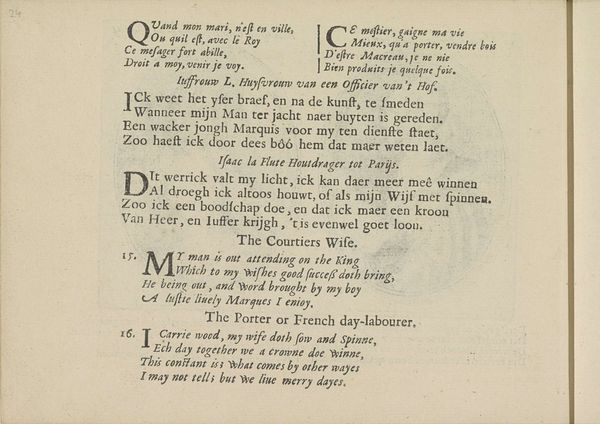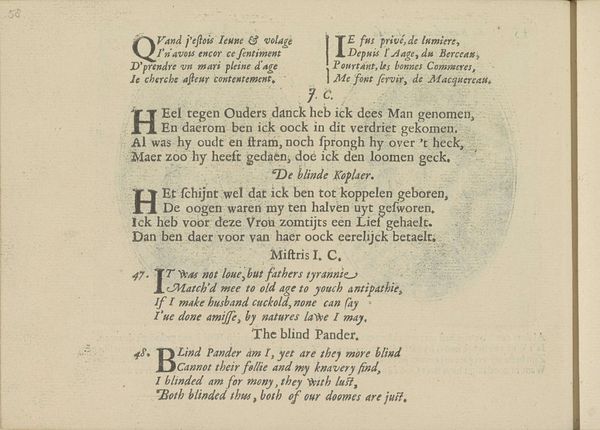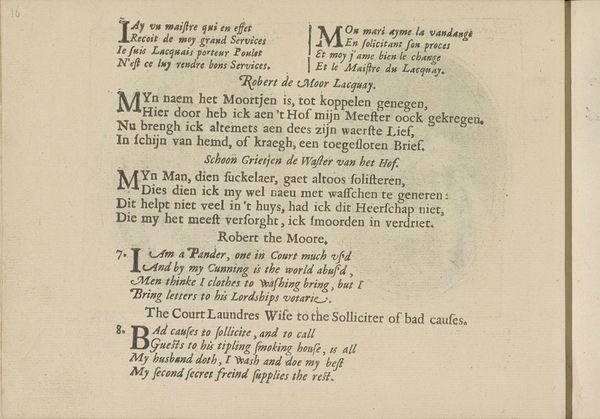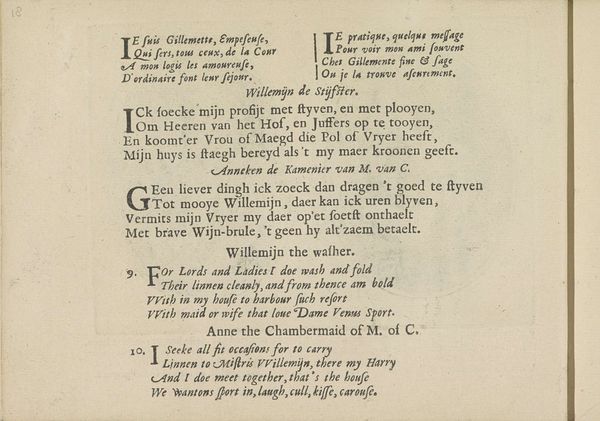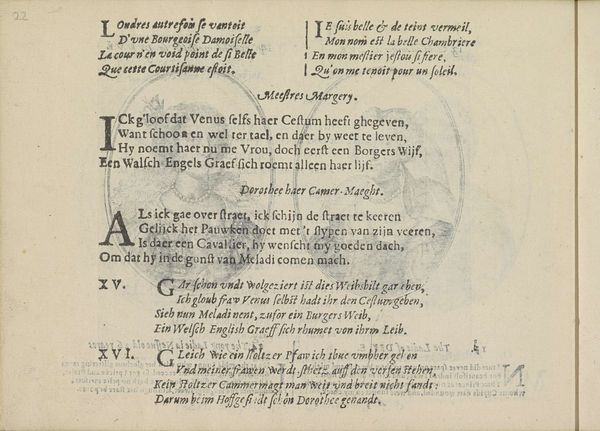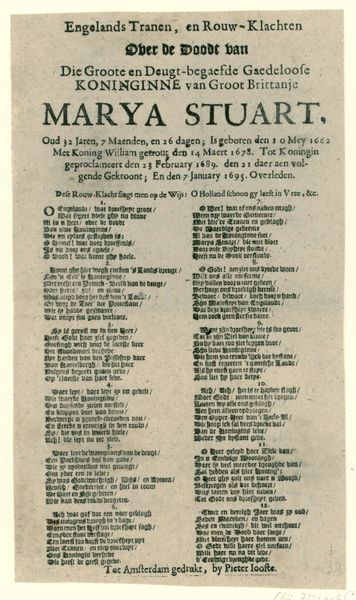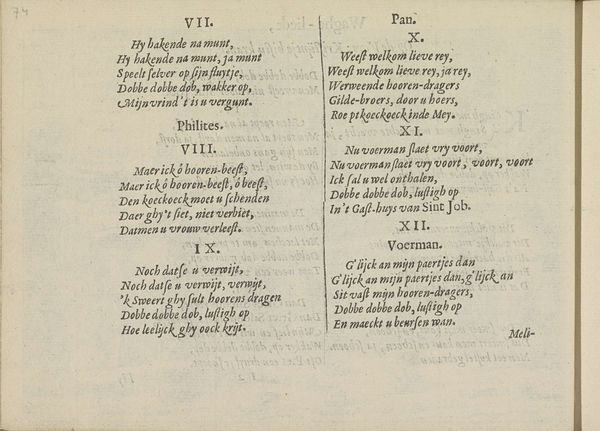
Kwatrijnen bij voorstellingen van een bedrieger en een uitdraagster 1641
0:00
0:00
crispijnvandeiipasse
Rijksmuseum
graphic-art, print, textile, engraving
#
graphic-art
# print
#
textile
#
engraving
Dimensions: height 140 mm, width 190 mm
Copyright: Rijks Museum: Open Domain
Editor: Here we have Crispijn van de Passe the Younger's engraving from 1641, titled "Kwatrijnen bij voorstellingen van een bedrieger en een uitdraagster," housed at the Rijksmuseum. It's essentially a page of text, poems really, beneath which I presume there would have been a visual representation, but now absent. How do we approach something like this, without the image, in terms of its socio-historical context? Curator: A great question. Even without the image, the text provides considerable insight into the social fabric of the 17th century. We have what are essentially advertisements or boasts by various figures operating on the fringes of society – a swindler, a peddler or procuress, perhaps others depending on those accompanying images. It reveals a commercial culture where even illicit activities sought their market. How might the presence of such prints in public spaces have shaped perceptions of these individuals and their trades? Editor: It's fascinating to consider these as early forms of marketing! And, if they were publicly displayed, perhaps that suggests a level of societal acceptance, or at least acknowledgement, of these figures. Were these prints intended for a broad audience, or a more specific, perhaps knowing, one? Curator: That’s the key question. The multiple languages -- French, Dutch, English -- points to a possibly wider, international audience interested in the urban, perhaps even morally questionable aspects of Dutch society. We see the Dutch Republic acting as a major hub for cultural exchange, trade, and with that, new types of social behaviours. Editor: So, in a way, this engraving, even just the text, offers a snapshot of the changing socio-economic landscape of the Dutch Golden Age and how societal norms were being challenged, marketed, and perhaps even, normalized. Curator: Precisely! It reminds us that art often plays a crucial role in shaping our understanding of cultural and political shifts, documenting behaviours considered illicit alongside high societal achievement.
Comments
No comments
Be the first to comment and join the conversation on the ultimate creative platform.
